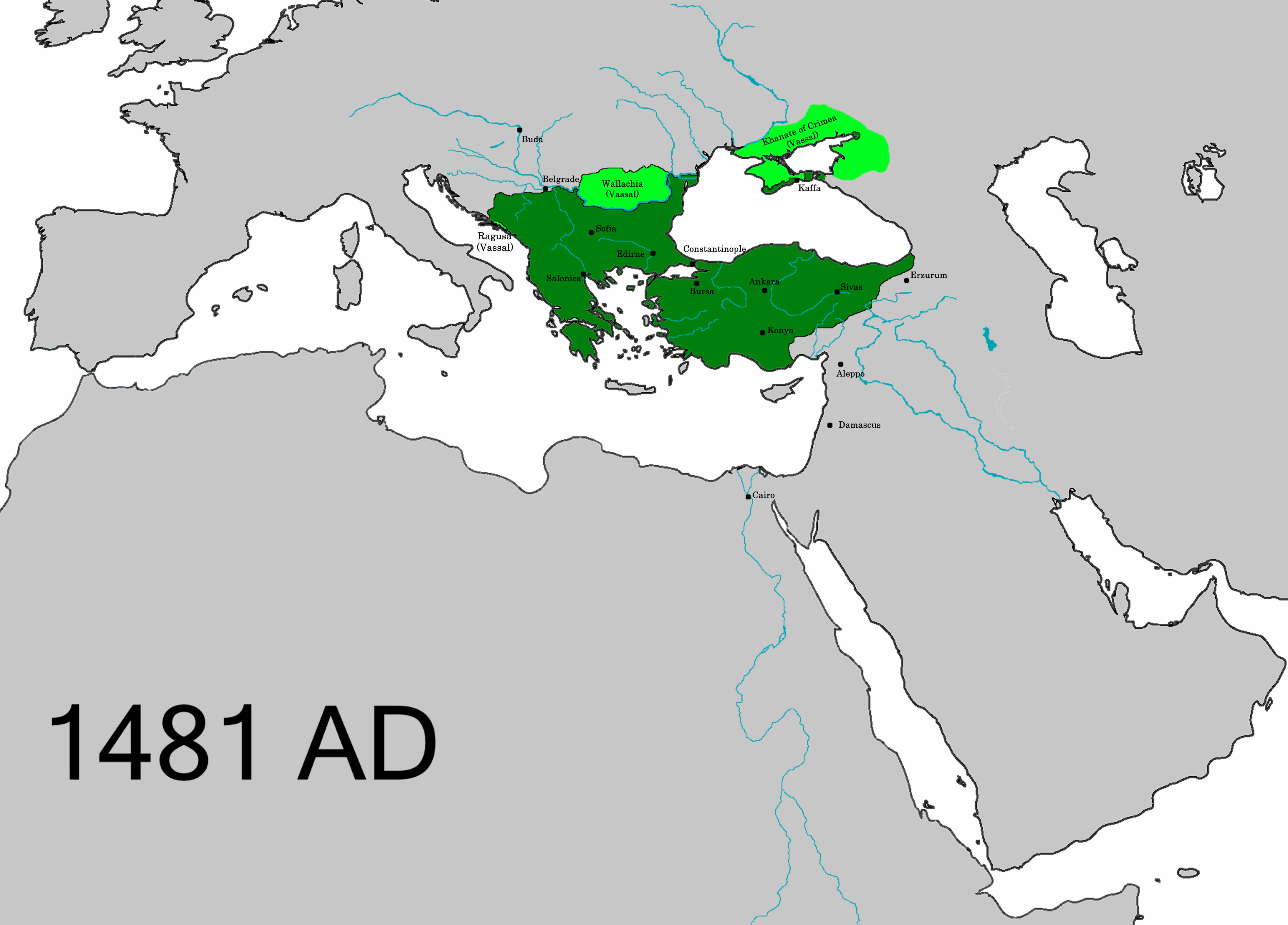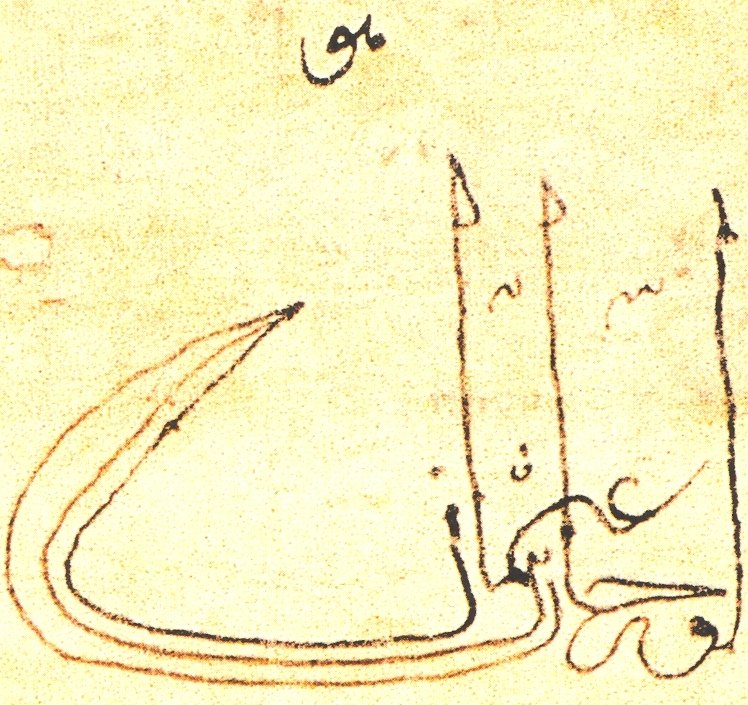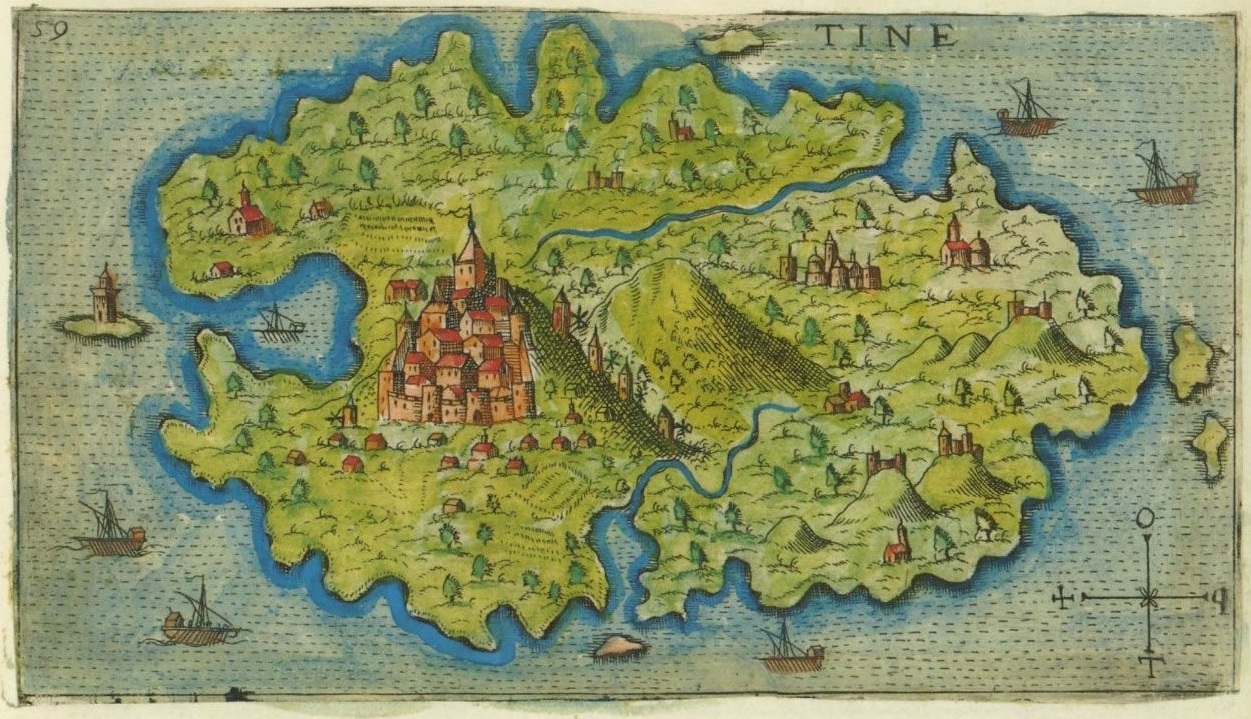|
Mustafa I
Mustafa I (; ; 1600, Constantinople – 20 January 1639, Constantinople), called Mustafa the Saint (Veli Mustafa) during his second reign, and often called Mustafa the Mad (Deli Mustafa) by historians, was the son of Sultan Mehmed III and Halime Sultan. He was Sultan of the Ottoman Empire from 22 November 1617 to 26 February 1618, and from 20 May 1622 to 10 September 1623. Early life Mustafa was born in the Manisa Palace, as the younger half-brother of Sultan Ahmed I (1603–1617). His mother was Halime Sultan, an Abkhazian lady. Before 1603 it was customary for an Ottoman Sultan to have his brothers executed shortly after ascending the throne, (Mustafa's father Mehmed III had executed 19 of his own brothers). But when the thirteen-year-old Ahmed I was enthroned in 1603, he spared the life of Mustafa. A factor in Mustafa's survival is the influence of Kösem Sultan (Ahmed's favorite consort), who may have wished to preempt the succession of Sultan Osman II, Ah ... [...More Info...] [...Related Items...] OR: [Wikipedia] [Google] [Baidu] |
Ottoman Claim To Roman Succession
After the conquest of Constantinople in 1453, the sultans of the Ottoman Empire laid claim to be the legitimate Roman emperors, in succession to the Byzantine emperors who had previously ruled from Constantinople. Based on the concept of right of conquest, the sultans at times assumed the styles ''kayser-i Rûm'' ("''Caesar'' of Rome", one of the titles applied to the Byzantine emperors in earlier Ottoman writings) and '' basileus'' (the ruling title of the Byzantine emperors). The assumption of the heritage of the Roman Empire also led the Ottoman sultans to claim to be universal monarchs, the rightful rulers of the entire world. The early sultans after the conquest of Constantinople–Mehmed II, Bayezid II, Selim I and Suleiman I–staunchly maintained that they were Roman emperors and went to great lengths to legitimize themselves as such. Greek aristocrats, i.e. former Byzantine nobility, were often promoted to senior administrative positions and Constantinople was maintaine ... [...More Info...] [...Related Items...] OR: [Wikipedia] [Google] [Baidu] |
Tughra
A tughra ( ota, طغرا, ṭuġrā) is a calligraphic monogram, seal or signature of a sultan that was affixed to all official documents and correspondence. Inspired by the tamgha, it was also carved on his seal and stamped on the coins minted during his reign. Very elaborate decorated versions were created for important documents that were also works of art in the tradition of Ottoman illumination, such as the example of Suleiman the Magnificent in the gallery below. The tughra was designed at the beginning of the sultan's reign and drawn by the court calligrapher or ''nişancı'' on written documents. The first tughra examples are from the 14th century. Tughras served a purpose similar to the cartouche in ancient Egypt or the Royal Cypher of British monarchs. Every Ottoman sultan had his own individual tughra. Etymology There are two main schools of thought on the origins of the word tughra. The first sees it derived from a Turkic secretarial emblem called ''tughragh ... [...More Info...] [...Related Items...] OR: [Wikipedia] [Google] [Baidu] |
Kara Davud Pasha
Kara Davud Pasha, also known as simply Davud Pasha or as Hain Davud Pasha ("Davud Pasha the Traitor"), was an Ottoman statesman who became briefly Grand Vizier of the Ottoman Empire in 1622, during the reign of his brother-in-law Mustafa I.Encyclopedia of Islam, vol.2 (1991), p.183 His first position was of Kethüda under Mehmet III (1595-1603) then he was named Kapıcıbaşı under Ahmed I (1603-1617, son of Sultan Mehmed III and one of his consorts Handan Hatun). He married in 1604 (consumated in March 1606) an Ahmed's half-sister, Şah Sultan, daughter of Sultan Mehmed III and an his other consort Halime Hatun. They had a son and a daughter whose name are unknown. He became Kapudan Pasha for a brief time during the first reign of Mustafa I (1617-1618).He was appointed Beylerbey of Rumelia and shortly afterwards vizier. He was Grand Vizier on 20 May 1622 during Mustafa I's reign through the influence of Halime Sultan, Mustafa's mother and his own mother-in-law. He ... [...More Info...] [...Related Items...] OR: [Wikipedia] [Google] [Baidu] |
Janissaries
A Janissary ( ota, یڭیچری, yeŋiçeri, , ) was a member of the elite infantry units that formed the Ottoman Sultan's household troops and the first modern standing army in Europe. The corps was most likely established under sultan Orhan (1324–1362), during the Viziership of Alaeddin. Janissaries began as elite corps made up through the devşirme system of child levy, by which Christian Albanians, Romanians, Armenians, Bulgarians, Croats, Greeks and Serbs were taken, levied, subjected to circumcision and conversion to Islam, and incorporated into the Ottoman army. They became famed for internal cohesion cemented by strict discipline and order. Unlike typical slaves, they were paid regular salaries. Forbidden to marry before the age of 40 or engage in trade, their complete loyalty to the Sultan was expected. By the seventeenth century, due to a dramatic increase in the size of the Ottoman standing army, the corps' initially strict recruitment policy was relaxed. C ... [...More Info...] [...Related Items...] OR: [Wikipedia] [Google] [Baidu] |
Topkapı Palace
The Topkapı Palace ( tr, Topkapı Sarayı; ota, طوپقپو سرايى, ṭopḳapu sarāyı, lit=cannon gate palace), or the Seraglio, is a large museum in the east of the Fatih district of Istanbul in Turkey. From the 1460s to the completion of Dolmabahçe Palace in 1856, it served as the administrative center of the Ottoman Empire, and was the main residence of its sultans until the 17th century. Construction, ordered by the Sultan Mehmed the Conqueror, began in 1459, six years after the conquest of Constantinople. Topkapı was originally called the "New Palace" (''Yeni Saray'' or ''Saray-ı Cedîd-i Âmire'') to distinguish it from the Old Palace (''Eski Saray'' or ''Sarây-ı Atîk-i Âmire'') in Beyazıt Square. It was given the name ''Topkapı'', meaning Cannon Gate, in the 19th century. The complex expanded over the centuries, with major renovations after the 1509 earthquake and the 1665 fire. The palace complex consists of four main courtyards and many smaller ... [...More Info...] [...Related Items...] OR: [Wikipedia] [Google] [Baidu] |
İbrahim Peçevi
İbrahim Peçevi or Peçuyli İbrahim Efendi or ''(in Bosnian)'' Ibrahim Alajbegović Pečevija (1572–1650) (Ottoman Turkish: پچویلی ابراهیم افندى ) was an Ottoman Bosnian historian-chronicler of the Ottoman Empire. Life He was born in Pécs (Peçuy), Ottoman Empire (today Hungary), hence his name, ''Peçevi'' ("from Pécs"). His mother was from the Sokolović Bosnian family. The name of his father is unknown. His paternal great-grandfather was a Turkish sipahi called Kara Davut Agha who was at the service of Mehmed II.Peçevi İbrahim Efendi, ''Tarih-i Peçevi'', Page XIX, Preface He was a provincial official in many places and became a historian after his retirement in 1641. He spoke Turkish and Bosnian very well. The year of his death is not known. According to Katip Çelebi, he died in the Islamic year of 1061 (1650 AD). But some historians think he died before 1649. Works Peçevi Effendi Effendi or effendy ( tr, efendi ; ota, افندی, efend ... [...More Info...] [...Related Items...] OR: [Wikipedia] [Google] [Baidu] |
Chief Black Eunuch
The kizlar agha ( ota, قيزلر اغاسی, tr, kızlar ağası, ), formally the agha of the House of Felicity ( ota, links=no, دار السعاده اغاسي, tr, links=no, Darüssaade Ağası), was the head of the eunuchs who guarded the imperial harem of the Ottoman sultans in Constantinople. Established in 1574, the post ranked among the most important in the Ottoman Empire until the early 19th century, especially after the stewardship of the two holy cities of Mecca and Medina and the supervision of all charitable foundations ('' vakifs'') in the Empire came under his purview. The wealth thus amassed, the proximity to the sultan, and the role the harem ladies played in court intrigues ("Sultanate of Women") meant that its occupant had considerable political influence; several kizlar aghas were responsible for the downfall of grand viziers and the accession of sultans. Soon after its creation and until its abolition, close to the end of the Ottoman Empire, the post came ... [...More Info...] [...Related Items...] OR: [Wikipedia] [Google] [Baidu] |
Safiye Sultan (wife Of Murad III)
Safiye Sultan ( ota, صفیه سلطان; "''pure''" 1550 – 20 April 1619) was the Haseki Sultan (chief consort) of Murad III and Valide Sultan of the Ottoman Empire as the mother of Mehmed III and the grandmother of Sultans: Ahmed I and Mustafa I. Safiye was also one of the eminent figures during the era known as the Sultanate of Women. She lived in the Ottoman Empire as a courtier during the reigns of seven sultans: Suleiman the Magnificent, Selim II, Murad III, Mehmed III, Ahmed I, Mustafa I, and Osman II. After the death of Selim II in 1574, Prince Murad took the throne as the new sultan in Constantinople under the name of Murad III. Safiye was by his side and moved with him to Topkapi Palace, and less than a year into his reign she received the title of Haseki Sultan (chief consort), which placed her above the princesses. Nurbanu, her Mother-in-law, who was with them as the Sultan's mother, was upset with Safiye's influence on Murad and wanted to replace her with anoth ... [...More Info...] [...Related Items...] OR: [Wikipedia] [Google] [Baidu] |
Kösem Sultan
Kösem Sultan ( ota, كوسم سلطان, translit=;, 1589Baysun, M. Cavid, s.v. "Kösem Walide or Kösem Sultan" in ''The Encyclopaedia of Islam'' vol. V (1986), Brill, p. 272 " – 2 September 1651), also known as Mahpeyker SultanDouglas Arthur Howard, The official History of Turkey, Greenwood Press, , p. 195 ( fa, ماه پيكر;, ), was the chief consort and legal wife of the Ottoman Sultan Ahmed I, valide sultan as the mother of sultans Murad IV and Ibrahim, and ''büyük'' ("elder") valide sultan as the grandmother of Sultan Mehmed IV. She became one of the most powerful and influential women in Ottoman history, as well as a prominent and controversial figure during the period known as the Sultanate of Women. Born in Tinos, then part of the Republic of Venice, to a Greek Orthodox priest, she was kidnapped and sold as a slave in Bosnia before being sent to the imperial harem in Constantinople, the Ottoman capital. There she rose to prominence, becoming the favourite ... [...More Info...] [...Related Items...] OR: [Wikipedia] [Google] [Baidu] |



.jpg)


